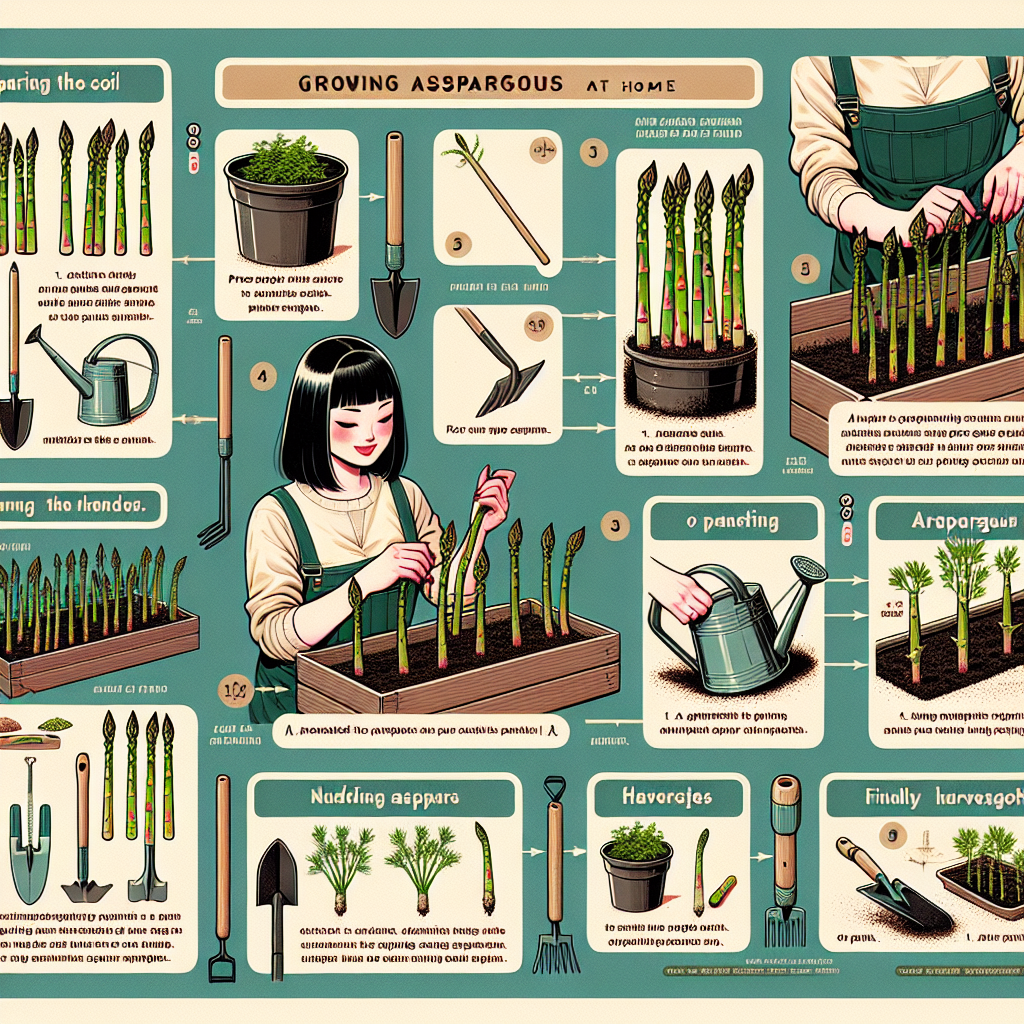The Ultimate Guide to Growing Asparagus at Home
Introduction:
Asparagus is a delicious and nutritious vegetable that many people enjoy. It has a unique and delicate flavor that is unlike any other vegetable. While it may seem daunting to grow asparagus at home, with the right knowledge and techniques, anyone can successfully cultivate this perennial plant in their own backyard. In this article, we will provide you with the ultimate guide to growing asparagus at home.
Benefits of Growing Asparagus:
Before delving into the specifics of growing asparagus, let’s explore some of the benefits of cultivating this vegetable in your own garden. Firstly, asparagus is a nutrient-rich vegetable packed with vitamins A, C, E, and K. It is also an excellent source of dietary fiber and contains high levels of antioxidants. Secondly, growing your own asparagus allows you to enjoy the freshest produce possible. Harvesting spears straight from your garden ensures peak freshness and flavors that are hard to beat.
Choosing Varieties:
There are several different varieties of asparagus available, each with its distinct characteristics. Some popular varieties include Martha Washington, Jersey Knight, and Purple Passion. When selecting a variety for your garden, consider factors such as taste preference, climate compatibility, and disease resistance.
Preparing the Soil:
Asparagus is a long-term investment in your garden since it remains productive for up to 25 years. Therefore, preparing the soil properly is crucial for successful cultivation. Start by selecting a sunny location with well-draining soil. As asparagus plants require good air circulation, avoid planting them in low-lying areas prone to waterlogging.
To prepare the soil, clear any existing vegetation or weeds before digging trenches about 8 inches deep and 12-18 inches wide. Incorporate generous amounts of organic matter like compost or well-rotted manure into the soil to improve its fertility.
Planting Asparagus Crowns:
Asparagus crowns, the root systems of the plants, are readily available at garden centers or through online nurseries. Planting crowns is the most common and efficient way to propagate asparagus. Before planting, soak the crowns in water for a few hours to rehydrate them.

Place the crowns in the trenches, making sure they are spaced 12-18 inches apart. Cover them with a thin layer of soil initially, gradually filling in the trench as the fern-like foliage emerges. It’s important to note that asparagus should not be harvested in the first year to allow it to establish a strong root system.
Care and Maintenance:
Once you’ve successfully planted your asparagus, maintaining its health and ensuring optimal growth requires regular care and attention. Asparagus is a heavy feeder, so regular fertilization is essential. Apply fertilizer rich in nitrogen during early spring and repeat every six weeks throughout the growing season.
To prevent weed competition, regularly cultivate around your asparagus bed using hand tools or a hoe. Be careful not to damage any emerging spears while doing so. Mulching can also be beneficial for weed control and moisture retention.
Harvesting Asparagus:
After patiently waiting for two years, you can finally start harvesting your asparagus crop! Once spears reach about 6-8 inches tall, carefully cut them at ground level using a sharp knife or scissors. Harvesting should be done selectively and allowed to continue until late spring or early summer when spear production naturally decreases.
It’s crucial not to overharvest during the first few seasons to allow plants to establish their energy reserves fully. Additionally, avoid harvesting all spears from an individual plant; instead, leave some uncut to develop into fern-like foliage that will replenish energy for next year’s growth.
Pests and Diseases:
Like any plant, asparagus is susceptible to various pests and diseases that may affect its overall health and productivity. Common pests include aphids, asparagus beetles, and slugs. Monitor your plants regularly for signs of infestation and apply appropriate organic pest control methods if needed.
Asparagus is also prone to fungal diseases such as rust and crown rot. To minimize the risk, avoid overhead watering, provide adequate air circulation, and remove any infected foliage promptly.
Conclusion:
Growing asparagus at home can be a rewarding experience that provides you with a bountiful harvest for many years to come. By following this ultimate guide, you now have the knowledge and techniques necessary to successfully cultivate this delicious vegetable in your own backyard. Remember to be patient during the establishment phase, care for your plants diligently, and enjoy the fruits (or rather spears) of your labor!













